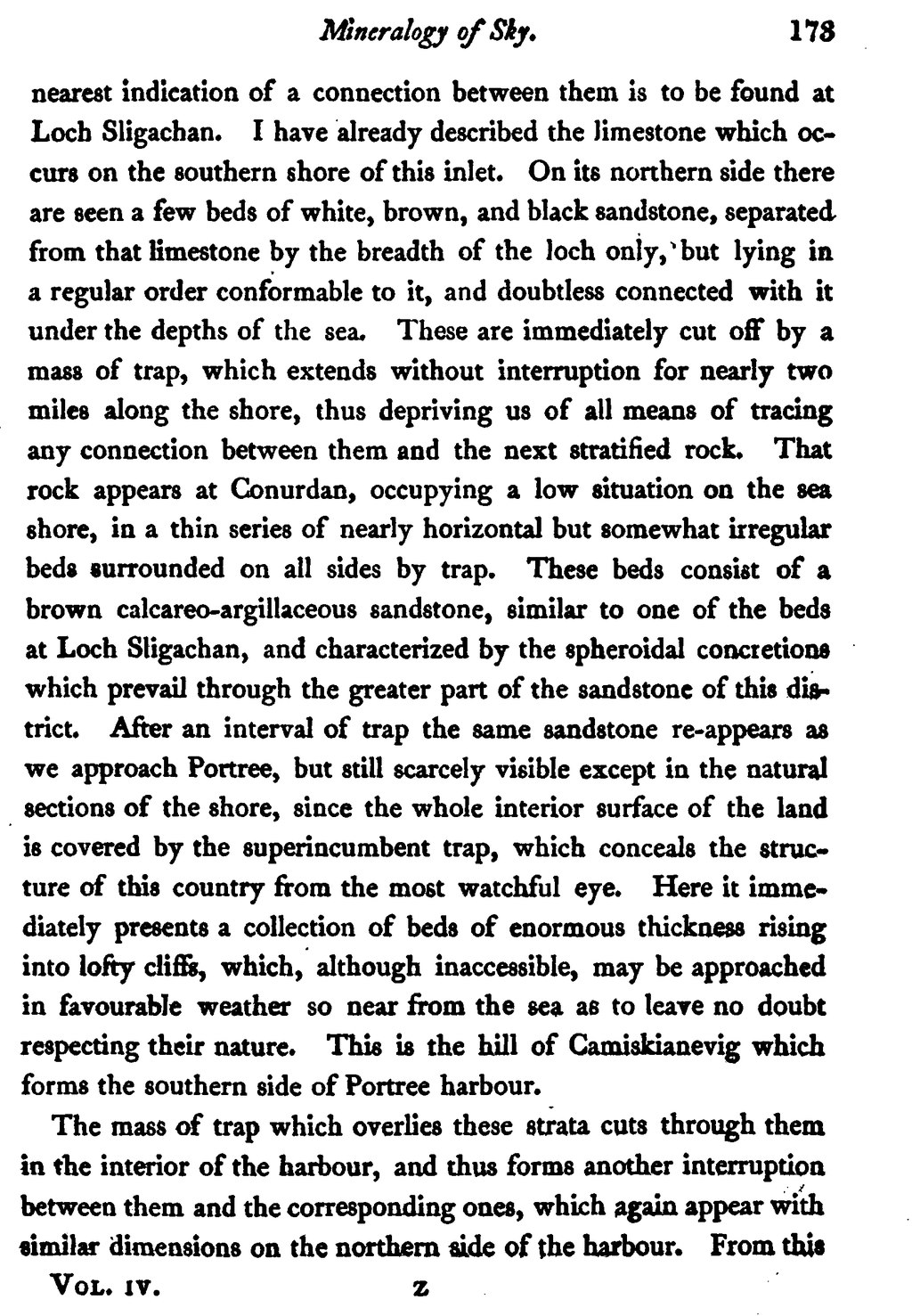nearest indication of a connection between them is to be found at Loch Sligachan. I have already described the limestone which occurs on the southern shore of this inlet. On its northern side there are seen a few beds of white, brown, and black sandstone, separated from that limestone by the breadth of the loch only, but lying in a regular order conformable to it, and doubtless connected with it under the depths of the sea. These are immediately cut off by a mass of trap, which extends without interruption for nearly two miles along the shore, thus depriving us of all means of tracing any connection between them and the next stratified rock. That rock appears at Conurdan, occupying a low situation on the sea shore, in a thin series of nearly horizontal but somewhat irregular beds surrounded on all sides by trap. These beds consist of a brown calcareo-argillaceous sandstone, similar to one of the beds at Loch Sligachan, and characterized by the spheroidal concretion which prevail through the greater part of the sandstone of this district. After an interval of trap the same sandstone re-appears as we approach Portree, but still scarcely visible except in the natural sections of the shore, since the whole interior surface of the land is covered by the superincumbent trap, which conceals the structure of this country from the most watchful eye. Here it immediately presents a collection of beds of enormous thickness rising into lofty cliffs, which, although inaccessible, may be approached in favourable weather so near from the sea as to leave no doubt respecting their nature. This is the hill of Camiskianevig which forms the southern side of Portree harbour.
The mass of trap which overlies these strata cuts through them in the interior of the harbour, and thus forms another interruption between them and the corresponding ones, which again appear similar dimensions on the northern side of the harbour. From this
